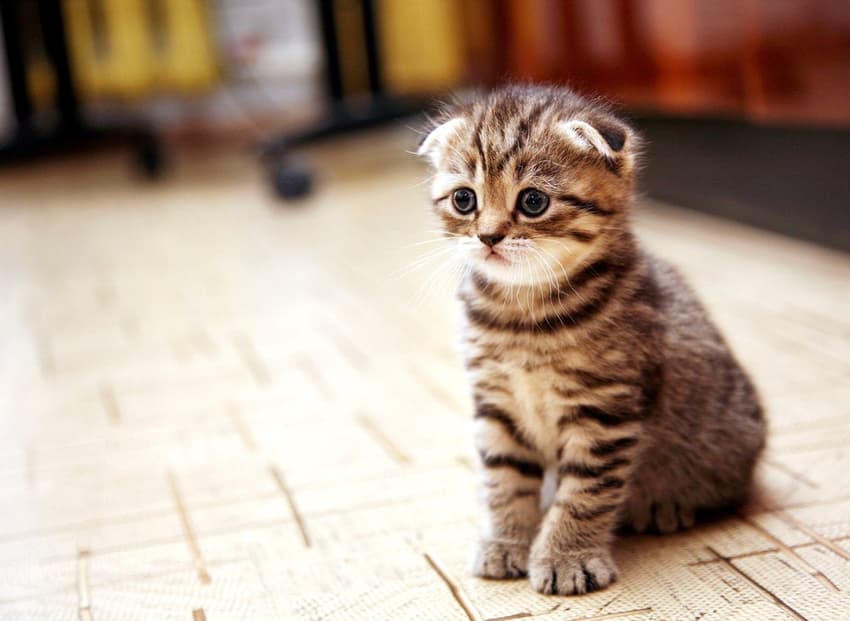Kitten journeys from Norway to Denmark on underside of truck

A kitten became a reluctant stowaway on 450-kilometre-long journey from Norway to Denmark after hopping on to the undercarriage of a truck.
After being driven and making a ferry crossing from Egersund in Rogaland, southwestern Norway to Bronderslev in North Jutland, the truck was handed over to a mechanic in the Danish town.
The mechanic found the kitty on the vehicle’s chassis, Norway’s national broadcaster NRK reports.
The little cat is thought to have been on board the lorry throughout its international journey.
“That’s a long journey for a little kitten,” Gritt Mathiesen Hanghøj, head of animal welfare at nearby cat shelter Nordjyllands Hittekilling, told NRK.
Hanghøj was contacted by the workshop who discovered the travelling feline.
The cat most likely climbed onto the truck’s undercarriage seeking warmth before being taken on an unexpected long haul.
Although a large part of the journey was a ferry crossing, the cat stayed under the vehicle for a long road trip, Hanghøj told NRK.
“The lorry drove from Egersund to Stavanger before taking the ferry from Stavanger to Frederikshavn in Denmark. The driver then drove to the workshop in Bronderslev,” she said.
The trailer was delivered to the workshop directly after its arrival in Denmark, making it unlikely the cat hopped on board after the crossing.
The female kitten is currently being looked after following her ordeal.
“She is dehydrated, lethargic and in shock, but is being given fluids, food and love. She made it through the night and there’s a good chance she’ll survive,” Hanghøj said.
“I think she’s used up a couple of her nine lives,” the cat shelter leader told NRK.
Search is now underway for the kitten’s owner, who is yet to be identified.
A social media post on Wednesday by Nordjyllands Hittekilling has been shared over 1,700 times, but a further update on Thursday said that no owner had been found so far. Neither has any further information become available on identity of the truck or its driver.
READ ALSO: Danish kitten takes solo train trip to neighbouring town
Comments
See Also
After being driven and making a ferry crossing from Egersund in Rogaland, southwestern Norway to Bronderslev in North Jutland, the truck was handed over to a mechanic in the Danish town.
The mechanic found the kitty on the vehicle’s chassis, Norway’s national broadcaster NRK reports.
The little cat is thought to have been on board the lorry throughout its international journey.
“That’s a long journey for a little kitten,” Gritt Mathiesen Hanghøj, head of animal welfare at nearby cat shelter Nordjyllands Hittekilling, told NRK.
Hanghøj was contacted by the workshop who discovered the travelling feline.
The cat most likely climbed onto the truck’s undercarriage seeking warmth before being taken on an unexpected long haul.
Although a large part of the journey was a ferry crossing, the cat stayed under the vehicle for a long road trip, Hanghøj told NRK.
“The lorry drove from Egersund to Stavanger before taking the ferry from Stavanger to Frederikshavn in Denmark. The driver then drove to the workshop in Bronderslev,” she said.
The trailer was delivered to the workshop directly after its arrival in Denmark, making it unlikely the cat hopped on board after the crossing.
The female kitten is currently being looked after following her ordeal.
“She is dehydrated, lethargic and in shock, but is being given fluids, food and love. She made it through the night and there’s a good chance she’ll survive,” Hanghøj said.
“I think she’s used up a couple of her nine lives,” the cat shelter leader told NRK.
Search is now underway for the kitten’s owner, who is yet to be identified.
A social media post on Wednesday by Nordjyllands Hittekilling has been shared over 1,700 times, but a further update on Thursday said that no owner had been found so far. Neither has any further information become available on identity of the truck or its driver.
READ ALSO: Danish kitten takes solo train trip to neighbouring town
Join the conversation in our comments section below. Share your own views and experience and if you have a question or suggestion for our journalists then email us at [email protected].
Please keep comments civil, constructive and on topic – and make sure to read our terms of use before getting involved.
Please log in here to leave a comment.